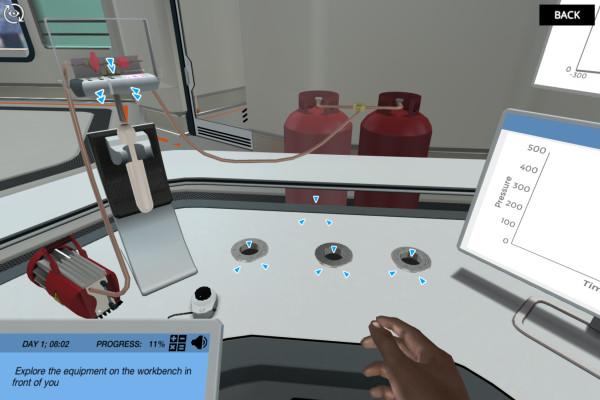
We are surrounded by an envelope of gases called air. Our life on Earth is subject to the existence of these gases. Understanding how the gases behave within the air or independently is of key importance when designing gas-based devices.
The ideal gas law is one of the fundamental laws which help understand gas behavior. It gives us the relation between temperatures, pressure, volume, and amount of the gas. This law is fundamental to multiple concepts in Chemistry.
However, like other chemical laws, it seems abstract and students often fail to take an interest in it. Considering that, this article presents five engaging ways to teach ideal gas law. Our goal is to breathe life into this abstract concept and make it an interesting concept to explore.
Theoretical laws often seem boring to students due to their abstract nature. For a deeper comprehension, students require tangible experiments or activities to apply and test these laws. However, gases are difficult to handle so their experimentation may not be feasible in chemistry labs.
The best approach, in this regard, is the use of interactive models and virtual labs. For instance, you can use the Labster Ideal Gas law simulation, where students can actively observe the changes in a gas’s pressure as it cools down in a safe and controlled virtual environment.
Moreover, the digital nature of the platform allows students to manipulate reaction times, swiftly reaching equilibrium. They can also repeat the experiment with different gases, exploring a range of outcomes without the limitations of physical resources.

Such immersive experiences grant students the flexibility and freedom to experiment, fostering an enriched understanding of the ideal gas law.
Games infuse an element of joy and enthusiasm into dry chemistry lectures. They provide an avenue for active participation, collaborative learning, and friendly competition among students.
A few engaging activities to consider include:
While gases can be felt, their molecules are invisible, making them tricky to study. Introducing technology into lessons brings an added dimension to learning. It offers a visually stimulating experience that significantly enhances engagement and comprehension.
Virtual reality and online simulations are prime examples of such technologies. They enable students to manipulate gas variables and directly observe the results, promoting an in-depth understanding of the law
Labster has curated multiple virtual lab simulations to make the teaching of ideal gas law fun and effective. For instance, in our introductory ideal gas law simulation, students get to see a magnified view of ideal gas molecules and how they behave under different conditions.

In the advanced ideal gas law simulation, students take a deeper look into the ideal gas equation and how its formulated. They can then verify and test this equation through virtual gas molecules. This makes learning more practical and engaging for them.

Linking the gas law to potential career paths can provide context and motivation for learning. It helps students understand the practical implications and importance of mastering this concept.
Careers in chemical engineering, meteorology, and even space exploration all require a solid understanding of the ideal gas law.
The ultimate goal of teaching is to equip students with knowledge and skills applicable to the real world. Mention how the ideal gas law helps in the determination of gas densities and plays a crucial role in stoichiometric calculations.
Similarly, multiple everyday technologies around us testify to the utility of the ideal gas law. The coolants in your refrigerator, the hot air balloons floating in the sky, the combustion engines powering vehicles - they all function based on this fundamental principle.
Highlighting these applications can help students see the relevance of what they are learning beyond the confines of the classroom.
Employing a variety of teaching methods can significantly enhance the learning experience. Interactive games, digital tools, and real-world connections make ideal gas law more relatable and engaging. These methods also prepare students for future careers and foster their academic growth.

Labster helps universities and high schools enhance student success in STEM.
Request DemoRequest a demo to discover how Labster helps high schools and universities enhance student success.
Request Demo